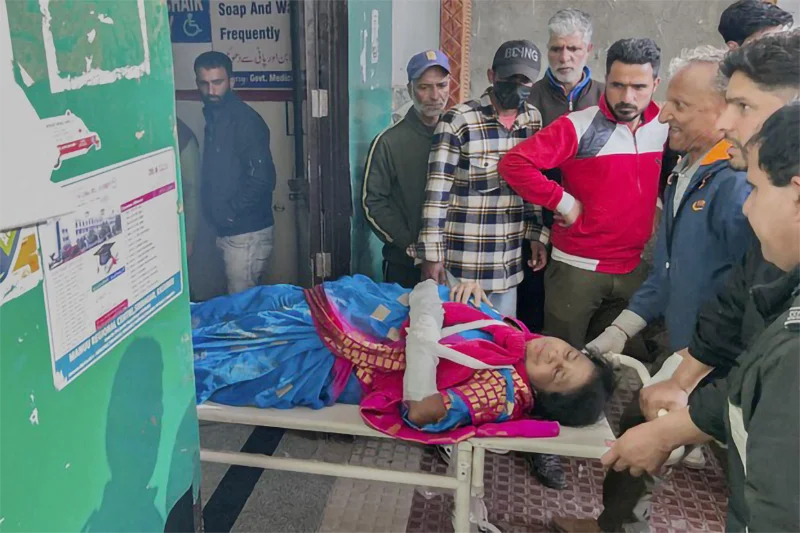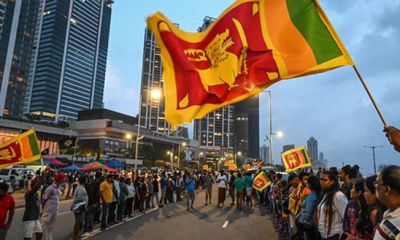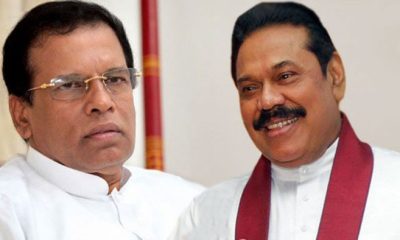Features
JRJ’s second term and aftermath

(Excerpted from volume ii of the Sarath Amunugama autobiography)
I left Sri Lanka to join Asian Media and Communication Centre (AMIC) in Singapore in March 1982. It was a short tenure as I had to report for duty in UNESCO, Paris in September that year. So, I was in Paris when the second Presidential election was held in Sri Lanka. Though the Presidential election under the new constitution was due in 1983 following a six-year term, the President with his penchant to spring political surprises as part of his tactics, announced that it would be held in October 1982 and immediately launched his reelection campaign.
When I spent a few days in Colombo in early September, en route to Paris, JRJ’s campaign was getting into full swing. As anticipated by the President the Opposition was in disarray. Since Mrs. B was disqualified and the SLFP was badly split there was no wholehearted support for a strong contender from the party. Several factions within the SLFP were in fact supporting JRJ.
A party stalwart Kal ugalle left the party and appeared on the President’s election platform. Maitripala Senanayake was lukewarm. Eventually the party nominated left of centre Kandyan, Hector Kobbekaduwa. I remember meeting my old boss, T.B. Illangaratne, about this time. He was disappointed with the SLFP for ignoring his claims for the nomination as he was senior to Kobbekaduwa, being a founder member of the SLFP. This was the reason for his later resignation from the party that he helped to build from its inception and sacrificed much for.
On the other hand, Mrs. B and her son Anura were displeased that an alternative leader was in the offing. This was made clear when Anura made the unwarranted statement that Kobbekaduwa was only ‘a contractor’ whose job was to win and bring Mrs. B back to power. This was playing right into the hands of JRJ.
To make matters worse a section of the Left decided to go on their own. Colvin R de Silva [LSSP], Vasudeva Nanayakkara [NLSSP] and Rohana Wijeweera [JVP] opted to contest and effectively sabotaged the chances of Kobbekaduwa. Only the Communist Party and a group of SLFPers led by Vijaya Kumaratunga and Chandrika supported by Illangaratne and Ratnasiri Wickremanayake backed Kobbekaduwa and in effect ran his campaign.
Surprisingly, and unanticipated by JRJ, the Kobbekaduwa camp began to gather momentum and worried JRJ who had experience of a similar ‘surge’ against the unassailable UNP in 1956. As mentioned before JR was not a man to forget. He later gave short shrift to those who stood in the way of his well-planned strategy for re-election.
As the contest heated up the radical elements in Kobbekaduwa’s campaign began to use the language of violence, perhaps to strengthen the resolve of their supporters. The old left knew how to use bloodcurdling threats which everybody knew was part of their theatrics. Kobbekaduwa’s speakers, some of whom had a JVP background, were not so subtle and their threats to ‘swim in the blood of the capitalists’ and particularly the UNP leaders, was carefully noted for future use.
Though Kobbekaduwa’s campaign was gathering steam in the country they ran out of time and money. But out of this campaign a new hero emerged. It was not Kobbekaduwa but Vijaya Kumaratunga who became the focal point of the resistance to the UNP, replacing the old left, the JVP and even the the group over which Mrs. B presided hoping to secure the succession for her son Anura.
As the undoubted emerging hero Vijaya attracted not only the support of the radicals but the hatred of the UNP, the JVP and parts of the SLFP. It was a vicious cocktail which he tended to ignore till it became too late. The immediate result was that Vijaya became the focal point of the left and was regarded as the next common candidate of the anti-UNP forces. It was a prospect that Anura and the SLFP rump did not relish and they did their utmost to vilify and sabotage Vijaya.
The aftermath
Though JRJ won the election comfortably as he planned by splitting up the Opposition, the result exposed many of the challenges he would have to face in his second term. He had reason to celebrate as he was the only UNP leader to win an election immediately after his first tenure of office. It was a victory never to be repeated by UNP leaders.
But ominously the north did not vote for him though he won every other province. Many attributed it to Mrs. B’s agrarian policies which favoured the local, particularly the northern, farmer. But it was also a growing indication of the power of the militant Tamil youth. Some of the armed groups like the EPRLF supported Vijaya.
The Sinhala youth segment of the country was turning to Vijaya who was becoming so popular that the LSSP and CP were obliged to hang on his coat tails. JRJ’s nominee to win over the youth, Ranil Wickrem-esinghe, was a hopeless failure. He was an elitist who had to depend on a group of his college friends and relatives to promote him. These friends were no better in the popularity stakes than him. The JVP, which had optimistically hoped for a large poll even if they were to lose, were now impatient and thinking of new ways to capture power. They abandoned their earlier internationalist policies and began to fashion a Sinhala nationalist ‘line’ which was opposed by senior leaders like Lionel Bopage.
In this context JRJ, together with hardliners like Premadasa and Lalith Athulathmudali, pondered his next move. His objective was to continue the reforms he had undertaken in his first term and secure the future of the UNP in the light of the unexpected strength of the Vijaya led resistance and the lack of cooperation of the Tamils who were now being intimidated by the armed groups who were controlled by RAW.
All this had to be weighed against the arbitrary use of power and abuse of human rights which became a major issue for JRJ from now on.In Paris where we followed events keenly and were briefed by Esmond who visited us, we realized that the President was set on a path of confrontation which was to blight his Presidency.
On the advice of Premadasa and Lalith he abandoned the Parliamentary election which was due in 1983 and decided to hold a referendum to extend the life of the Parliament which was elected in 1977. This was an obvious ploy to retain his steamroller majority which could not be assured if a new election was held.
Apart from the loss of popularity of an incumbent regime, JRJ’s own electoral system introduced in his Constitution which called for ‘Proportionate Representation’ [PR] precluded the possibility of the emergence of a large majority in Parliament.
He also called for undated letters of resignation from his MPs. He then ordered a referendum to extend the life of Parliament and threatened the MPs who failed to get a majority of ‘Yes’ votes in their constituencies with dismissal. The referendum itself was flawed. Violence was used to prevent the opposition from garnering a ‘No’ vote. Having had his way by force, JRJ then proceeded to wreak vengeance on all those who gave him a scare in the Presidential election.
Repressive Measures
His first move was to imprison his chief adversaries led by Vijaya Kumaratunga on a spurious charge of Naxalite violence. While there may have been bloodcurdling talk on the election stage it was manifestly clear that Vijaya and his supporters were not in a mood for extra-Parliamentary confrontation and violence. JRJ cast his net wide and arrested radical leftists of the NLSSP, CP and JVP. Some of them like Vijaya were incarcerated under inhuman conditions while others like the JVP went underground.
The stable political environment which prevailed in JRJ’s first term was now in jeopardy. He then turned to the Tamil issue which was becoming more and more of a security problem. He was also nonplussed at his poor performance in the North and had a growing suspicion that the Colombo Tamils were playing a double game, supporting the ‘Boys’ in the North while doing good business in the South thanks to the open economy.
He instructed his nephew the Army Commander ‘Bull’ Weeratunga in Churchillian tones “to wipe out terrorism in the North”. Weeratunga unleashed a reign of terror. A censorship was imposed, and the newspapers were prohibited from publishing the finding of the inquests into the deaths of many young Tamils who were accused of aiding and abetting terrorism. The riots of 1983 and the Weeratunga offensive led to the strengthening of the militants and the decline of the TULF.
Features
Virulence of identity politics underscored by rising India-Pakistan tensions

 In the wake of the ‘leave India’ order issued to all Pakistani nationals in India by the Indian centre, the authorities in India’s Madhya Pradesh are reportedly up against a troubling dilemma with regard to what they must do with the offspring of Pakistani fathers and Indian mothers. In other words, of what nationality are they: Indian or Pakistani?
In the wake of the ‘leave India’ order issued to all Pakistani nationals in India by the Indian centre, the authorities in India’s Madhya Pradesh are reportedly up against a troubling dilemma with regard to what they must do with the offspring of Pakistani fathers and Indian mothers. In other words, of what nationality are they: Indian or Pakistani?
Such challenges could be confronting quite a few states in India in view of the likely widespread presence of mixed origin children in the country but the tangle helps to also highlight the harmful impact identity politics are continuing to wield on India, South Asia’s most successful democracy. Given its official democratic and secular identity, India would need to steer a policy course on this question that would indicate a rising above narrow nationalistic politics by the centre.
It is in fact a testing time for India. Given its democratic credentials the observer would expect the Indian centre to take a broad, humane view of the matter and allow the children to stay on in India, since the situation is not of the children’s making. If eviction orders are issued on the children as well narrow identity politics could be said to have won in India. However, this is entirely a matter for the central government and would be resolved by it in keeping with what it sees as its national interest currently. Hopefully, India’s enlightened national interest would be heeded.
Such policy dilemmas over a person’s true national identity, decades into India’s ‘political independence’, point to the persistence of challenges central to nation-making in the country. But such challenges are continuing to be faced by the entirety of South Asia as well.
All over the region, divisive identity politics are continuing to challenge the credentials of those states that are claiming to be democratic. Would they say ‘no’ emphatically to those political forces that are championing narrow ethnic, religious and language identities, for example, and steer a policy course that would be faithful to secularism and equity in all its dimensions?
This is the question and it could be of course posed to Sri Lanka as well, whose current government is claiming to work towards the establishment of a polity that is free of ethnic and religious nationalism. Democratic opinion in Sri Lanka would like to have concrete evidence that it is genuinely committed to these ideals.
Thus is a re-visit of the founding ideals of India and other democracies of the region being prompted by the current crisis in India-Pakistan relations. The conflict ideally ought to prompt democracies to question to what degree they are truly democratic and take the necessary measures to put things right on that score.
If nation-making in the truest sense has occurred in South Asia we of the region would not be having on our hands the currently endemic and wasting identity-based conflicts and wars. Nation-making is rendered possible when equity in all its respects is practised by states. It is the surest means to national integration and unity. The majority of states of South Asia are nowhere near these goals.
The fillip it may provide identity based discord in the region could be counted as one of the relatively slow-acting but dangerously insidious effects of the present India-Pakistan confrontation. The current, dangerous war of words between the sides, for instance, would only serve to intensify the populist perception that the region is seeing a vastly invigorated Hindu India versus Islamic Pakistan polarity. However, in the immediate term, it is a hot war that ought to be guarded against.
As mentioned in this column last week, a regional initiative towards resolving the conflict would prove ideal but since SAARC is currently in a state of virtual paralysis, Commonwealth mediation emerges as the next best option to explore in working out a negotiated solution.
Unfortunately, UN mediation, although desirable in this crisis is unlikely to prove entirely effective in view of the possibility of the major powers using such intermediation to further their partisan interests. Going forward, the UN General Assembly would need to take note of these considerations and figure out as to how it could play a constructive role in peace-making and insulate itself against interference by major powers.
Comparatively, the Commonwealth of Nations could prove more balanced in its managing of the confrontation. This is on account of the formation being widely representative of the developing world and its main interests. However, well-meaning groupings and individual states that have generally insulated themselves to big power manipulations could prove effective in these peace-making efforts as well. The need is for an in-gathering of countries that place peace in South Asia above partisan, divisive interests.
Given India’s major power status and its crucial economic interests worldwide it could be justifiably surmised that the April 22nd terror attack on civilians in Indian-administered Kashmir was deliberately planned to cause the greatest harm to India. The setback India’s tourism industry may suffer, for instance, should be taken cognizance of.
Besides, the strategy was also to ignite another round of religious riots in India and outside. Given these considerations it should not come as a surprise if the Indian political leadership sees it to be in India’s interests to initiate a tough response to the attack.
However, a military response could prove extremely costly for India and the region, as pointed out in this column last week. The negative economic fallout from a new India-Pakistan war for the region and the world could be staggering. The disruptions to the supply chains of the countries of the region from such an outbreak of hostilities, for instance, could be prohibitive and bring the countries of the region to their knees.
A crucial need is for politicians in both India and Pakistan to think beyond their short term interests. Quick military action could yield some perceived short term gains for these politicians but in the long run the South Asian region would be reverted to the position that it was in, in the mid- forties of the last century: a region dismembered and divided against itself.
Stepped-up peace efforts by civilian publics on both sides of the divide could prove enormously beneficial. Besides other things, these civilian groupings need to work tirelessly to curb the fatal influence identity politics wield on politicians and publics.
Features
The Broken Promise of the Lankan Cinema: Asoka & Swarna’s Thrilling-Melodrama – Part IV

“‘Dr. Ranee Sridharan,’ you say. ‘Nice to see you again.’
The woman in the white sari places a thumb in her ledger book, adjusts her spectacles and smiles up at you. ‘You may call me Ranee. Helping you is what I am assigned to do,’ she says. ‘You have seven moons. And you have already waisted one.’”
The Seven Moons of Maali Almeida
by Shehan Karunatilaka (London: Sort of Books, 2022. p84)
(Continued from yesterday)
Swarna’s Obsession with Manorani
Swarna was clearly fascinated by Manorani Sarwanamuttu. She has noted the striking, angled close-up photograph of Manorani’s face, eyes closed, head thrown back, dressed in a black sari with a large white print and her hair held in place as usual with a spray of Jasmine, at the public cremation of Richard’s body on an open pyre. A brilliant public theatrical riposte, fearless. I think Lucien de Zoysa was standing beside her.
Swarna mentions a detail she observed during one of her four visits to meet Manorani, beginning in 1996, dressed with her hair tied in a low knot adorned with Jasmine flowers as Manorani usually did, as some Tamil women do. She said that she saw Manorani ‘gulp down her tears (kandulu gilagatta).’ Her response to what she saw clearly puzzled her as a Sinhala mother. So, her response in enacting her as Rani was to offer the opposite in her portrayal of Manorani. In her rendition of Asoka’s Rani (Queen) she indulged in a limited melodramatic gestural repertoire, perhaps imagining that Manorani had ‘repressed’ her sorrow. Therefore, she, Swarna, was doing her a favour by finally enabling the ‘return of the repressed,’ through her Melodramatic rendition of her Rani.
A Cosmetic Tamilness
The red pottu functioned as the seal for the white scroll invitation to the premier and in the advertisement to dot the ‘I’, in Rani. As well, a close-up of Rani pasting on a red pottu after having delivered a baby, emphasises it as a marker of difference. This is a cosmetic use of Tamilness without any idea of the multi-ethnic Ceylonese social milieu in which she grew up.
Used adjectively, ‘Cosmetic’ implies superficial measures to make something appear better, more attractive, or more impressive but doesn’t change anything structurally.
The saris worn by Swarna as Rani and her styling are clearly chosen by her as she has a professional knowledge of Indian handloom cotton saris which she once sold at an exclusive boutique in Colombo. Interestingly, young women emulated Swarna’s excellent taste in a certain Indian look which is very flattering too. There is a lovely photograph of her with a pottu and draped in Indian cotton sari with a choker necklace, a low-key elegance. It is also the look that Shyam Benegal, coming to film from advertising, popularised with Shabana Azmi in their films together; a ‘Festival of India’ look. This styling was part of the ‘fiction’ determined by Swarna and her tastes and had no relationship to Manorani and her tastes. It’s the marketability of a rather exotic and strange (aganthuka she said) upper-class woman, dressed up as a ‘Tamil,’ that appears to have been the main ‘design objective’ in choosing costumes and accessories.
al Melodramatic Scene Construction
Asoka’s ‘fictional’ (Prabandhaya) scenes and narration are composed using melodramatic devices; coincidences, sub-plots, climaxes, sudden reversals, revelations and the like. Here I am engaging Asoka on his own terms, arguing that his ‘fiction’ as fiction, has not been constructed well. That is to say, that the ‘fictional world’ Asoka has constructed is not believable, feels false in the way many of our early melodramatic genre films felt artificial. It is wholly inadequate to create the violent political context for the main story.
But those simple films never claimed the status of art, their simplicity, their sarala gee, their naive characters, part of their faded charm. There are Sinhala film fans who are professional journalists I have listened to online, who still express their deep love of those films, the song sheets, hearing them on radio and records, that whole cinematic experience.
Rani with its orchestral score for solemn moments, Rani pacing up and down, smoking furiously at troubled moments, framed at the window with smoky mood lighting, are all hackneyed devices which fail to express a sense of interiority, they are just ‘cosmetic’ superficial, cliched gestures of a hundred melodramas globally. Swarna’s Rani’s drunken dance scene with Richard and his friends has a forced quality, stagy. Rani’s driving scene looked like a drive in a studio with a projected white wall as the outside, again felt unreal and pointless except to show that she dared to go into a kade to buy cigarettes. The play within the film of Asoka’s much-loved Magatha felt very clunky, therefore for specific melodramatic plot points; ‘Rani’s irritation with Sinhala theatre and the opportunity to see Gayan being assaulted without stopping to help as mother and son drove back home. Then the same moral is underscored, as simplistic melodramas always do, when her own neighbours also don’t do anything when they see Richard being abducted.
This kind of melodramatic moralism does a disservice to the intelligence and sophistication of those Lankans who created the multi-ethnic Aragalaya/Porattam/Struggle in 2022, who have appreciated immensely Manuwarna’s film Rahas Kiyana Kandu both in Lanka and here in Australia. Rani’s Christianity is used again to stage a symbolic scene with the stained-glass window image of ‘the sorrowful mother Mary holding her son’s body’, and to recite the famous biblical lines which are quite inappropriate for the context. Absalom was a traitor to his father King David and fought against him and died in battle. King David spoke those lines when his son died. It has no connection with a mother’s relationship to her murdered son who wasn’t guilty of anything. It’s just a cheap ‘poetic’ touch that sounds solemn, a ‘cosmetic’ use of the Hebrew Bible.
Sinhala cinema time and time again makes a female character Christian when she behaves ‘badly’ that is, sexually promiscuous, takes an independent initiative, as though Christianity with its ‘western values’ are the cause of behaviour considered immoral from the point of view of the good Sinhala Buddhist girl. A popular male critic went so far as to say that Rani shows Lankan men that there is nothing wrong with women drinking and smoking.
Talking of girls, the sub-plot line with the sweet and innocent young girl whose child is delivered by Rani is straight out of Melodrama which often needs an ‘innocent girl stereotype’ to contrast her with another kind of femininity, worldly, lax. The orchestration of the coincidence of a birth with Richard’ death through ‘parallel montage’ is one of the staple editing devices of Melodrama and police thrillers. The innocent young mother’s sentimental story about the crush she has on Richard and the relationship between Rani (who has been friendless) and her over time feels tacked on, artificial, to find a ‘bitter-sweet’ melodramatic narrative resolution on the beach, with ‘HOPE’, writ large.
Perhaps this is why when a well-prepared young Lankan Australian podcaster with a special interest in acting, interviewing Swarna, attempted to ask her about the criticism back home about the construction of the character of Rani, she sharply interrupted him in mid-sentence, to say, ‘those things are not worth talking about, a waste of time … we have made a good film, well directed, edited…’.
Swarna’s normally affable manner changed, and the interviewer politely agreed with her and she went on to conduct the interview herself, informing us of screening several of her films at a festival in Calcutta. The implication of this arrogant move is that an actor with that record couldn’t possibly have made a dud.
It’s just not cool for actors to praise their own films. Let the public, critics, academics and cinephiles make their judgements which are their democratic prerogative, pleasure and professional work. The critical reception has been unprecedented and the Social Science Journal, Polity’s special Issue on Rani is essential reading.
I do wish Swarna Mallawarachchi many more moons (than the 7 Moons destined for Maali Almeida), to explore what Eugenio Barba called The Secret Art of the Performer. In Shehan Karunathilaka’s The 7 Moons of Maali Almaida (which provided the epigraph for my piece), this phantom figure Maali plays multiple roles of the actor called Richard de Zoysa. Notably, that of Malinda Albert Kabalana, in the ‘In-between Worlds’ haunted by the phantoms of Rajani Thiranagama and the multitude of anonymous victims of that era of political terror in Lanka.
Shehan had clearly read Martin Wickramasinghe’s Yuganthaya and seen Lester’s film, where Richard de Zoysa played the idealist son Malinda Albert Kabalana to Gamini Fonseka’s conservative, capitalist father. He has also done a formidable amount of research into recent Lankan political history and then transformed that History into an Allegory. Melodrama as a genre structurally, simply does not have the formal power that inheres in Allegory to represent History in ruins, unless one has been able to create, as Fassbinder did, a Brechtian Melodramatic Cinema. If not, one ends up exploiting political histories of violence and suffering, to create thrillingly sensational Melodramas that play well to the box office but are freighted with emptiness. It is Frederick Jameson, the highly influential Marxist Literary critic, who once said that the best of ‘Third World Literature’ was allegorical, thinking of Marquez’ One Hundred Years of Solitude and closer to home, Rushdi’s Midnight’s Children.
I hope Swarna will allow herself some time to reflect on the Dr Manorani Sarwanamuttu that her own phantasy-Rani has suppressed. Perhaps she has played the formidable roles of the angry and the furious, ‘avenging women’ for too long. Vasantha who studied ‘true crime’ deeply, also astutely showed us through Swarna as a mature woman in Kadapathaka Chaya, where the relentless pursuit of ‘REVENGE’ can lead an individual. And we see its results at a national scale in these eras of terror. In this process of taking stock, Swarna might also think a little about Rukmani Devi and perhaps hunt down the booklet she had written called Mage Jivitha Vitti. ‘Vitti is different from ‘Jivitha Kathava’. In this way she just might begin to understand deeply, affectively, as only an actor worthy of that name can, the reserve, dignity, grace, lightness, joy and yes, the sense of theatre, with which Dr Manorani Saravanmuttu and Rukmani Devi faced the many ‘slings and arrows of outrageous fortune’ as professional women of Lanka who were also Tamil. (Concluded)
by Laleen Jayamanne
Features
A piece of home at Sri Lankan Musical Night in Dubai

 The much-anticipated Sri Lankan Musical Night was held recently in the heart of Downtown Dubai, at the Millennium Plaza Hotel.
The much-anticipated Sri Lankan Musical Night was held recently in the heart of Downtown Dubai, at the Millennium Plaza Hotel.
Reports indicate that the venue was transformed into a vibrant enclave of Sri Lankan culture, unifying the power of music and the enduring spirit of the Sri Lankan diaspora.
The band DOCTOR, from Sri Lanka, was very much in the spotlight, blending traditional Sri Lankan melodies with contemporary rhythms, evoking nostalgia and delight among the audience.
In addition to Lanthra Perera’s vibrant performance, the supporting artiste, too, made it a happening scene with their energetic and exciting vocals; Sajitha Anthony, I’m told, mesmerised the audience with his soulful voice; Rajiv Sebastian, a crowd favourite, both here and abroad, displayed his professionalism and energetic presence on stage; Nushika Fernando’s captivating act was widely applauded. Sudewa Hettiarachchi did the needful as compere.
Sri Lankan Musical Night was organised by DJMC Events in collaboration with Event partners Chaminda De Silva and Romesh Ramachandran.

The band DOCTOR
DJMC Events Chairman Dunstan Rozario’s vision and dedication were vividly evident in every aspect of this show. His passion for creating cultural platforms that unite communities through entertainment resonated throughout the evening, setting the tone for an event dedicated to unity and celebration.
Beyond the musical performances, the occasion served as a dynamic gathering for the Sri Lankan community in the UAE. Attendees, from long-time expatriates to recent arrivals, found common ground in shared songs and stories, creating an atmosphere imbued with warmth and belonging.
Feedback from attendees was overwhelmingly positive, with widespread enthusiasm for more culturally enriching events in the future. One attendee aptly captured the essence of the evening, stating, “Tonight, we didn’t just listen to music; we felt a piece of home.”
DJMC Events plans to build on this momentum, further promoting Sri Lankan culture in the UAE and internationally.
Plans are already being laid out for future happenings to celebrate and preserve Sri Lanka’s rich cultural heritage.
-

 Business5 days ago
Business5 days agoPick My Pet wins Best Pet Boarding and Grooming Facilitator award
-

 News5 days ago
News5 days agoNew Lankan HC to Australia assumes duties
-

 News5 days ago
News5 days agoLankan ‘snow-white’ monkeys become a magnet for tourists
-

 News3 days ago
News3 days agoJapan-funded anti-corruption project launched again
-

 Features5 days ago
Features5 days agoKing Donald and the executive presidency
-

 Business5 days ago
Business5 days agoACHE Honoured as best institute for American-standard education
-

 Features7 days ago
Features7 days agoThe Truth will set us free – I
-

 Business3 days ago
Business3 days agoNational Savings Bank appoints Ajith Akmeemana,Chief Financial Officer
























